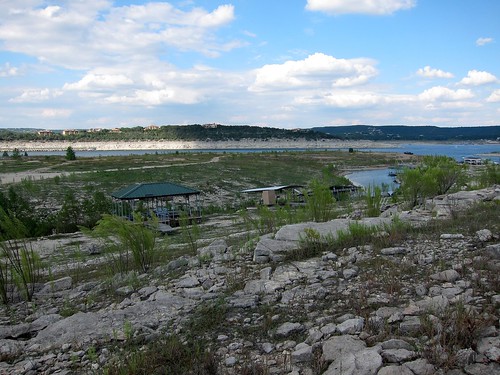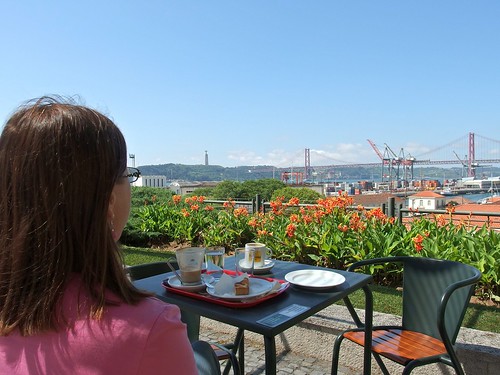The romanticized ideal of a trip to Europe is sunny effortless days of rapturous delight being immersed in Old World culture and cuisine. Sounds great, doesn't it? Sometimes, however, a trip requires a bit more effort and results in a little less rapture. Like for instance, this latest visit to Italy, two and a half weeks in Milan, Turin, Genoa, and Pavia.
I'm glad we went; we saw some wonderful things and ate some delicious food. But this trip more than any other was beset by difficulties beyond our control.
It began pleasantly enough, with a gorgeous sunrise over Italy as our airplane began its descent into Milan.
Click on any image for a larger view on Flickr and more details.
Little did we realize that would be about the last time we saw the sun. Every day, day after day, was gray and overcast and frequently drizzly, with temperatures varying from cold to really cold. Perhaps it was the weather that contributed to another problem, our difficulty overcoming jet lag. It seemed especially bad this time, endless hours tossing and turning at night followed by utter brainlessness in the morning, disrupting our plans the first four or five days until we accommodated ourselves to the new routine. Next time we'll bring along more zolpidem.
Almost immediately we realized that northwest Italy, Lombardy and Piedmont, are significantly more expensive than other parts of Italy. Our hotels in Milan and Turin were almost double what we usually pay. At neighborhood restaurants, primi piatti (first courses, mostly pasta) were €11 to €15 ($14 to $19) and secondi piatti (second courses, meat and fish) were €18 ($22) and up. Most places did not have house wines but instead offered wine lists with bottles €18 to €25 ($22 to $30). So, a dinner of, say, one antipasto split between us and a primo or secondo piatto each, along with water and wine, was around €60 to €90 ($75 to $110). (For comparison, on our last trip to Lisbon, in May, we rarely spent more than €20 ($25) for our main meal of the day, whether it was dinner or a big lunch.) The food was expensive but, as expected, very tasty. Here's a snap of my pork tenderloin with caramelized pear and wine sauce at Milan's Hostaria Borromei.
At the end we had to deal with a sciopero, a strike of transportation workers, that cancelled most rail travel. Without going into all the messy details, I will say that during the final few days of our trip we had many anxious moments at train station ticket offices figuring out how and when and whether we could get back to Milan and from there to the airport. Add to that a very delayed flight from Malpensa and we were lucky indeed to make it home on time.
These problems aside, we were excited to see a lot of Italy we had never seen before.
Milan is a big, bustling, prosperous city, not particularly charming or inviting but one would never lack for something to do. We saw Da Vinci's "Last Supper" but were more impressed by the works in the Brera and Poldi Pezzoli museums. The Duomo in the center of town is magnificent, inside and out, and we were lucky that the clouds broke ever so slightly for the hour or so we spent on the roof terrace.
Turin was much more to my liking, at least at first. The city center has several large squares and an easy-to-navigate grid layout. The energy level seemed lower and more relaxed than Milan and we were looking forward to a more leisurely pace. But two days after we arrived it was the big holiday weekend, L'Immacolata, when every Italian in Italy is out and about. Museums that were deserted on Friday had hours-long lines on Saturday. Even with the dense crowds, we got to see the famous Egyptian Museum and the Museo dell'Automobile, and rode a really cool cog railway up to Superga Basilica overlooking the city. Unfortunately the weather was so gray and foggy we couldn't see much, so we went back down to mingle with the masses.
Then it was onward to Genoa, my favorite city of the trip. The hills and pastels of a port reminded me of Lisbon, and we had fun riding elevators and funiculars to different levels of the town. We visited the tiny fishing village of Boccadasse and spent a pleasant afternoon in the Museum of the Sea. And best of all we had almost an entire day of sunshine.
The final stop was Pavia, a small town outside Milan. We spent all of an afternoon at the famous Certosa di Pavia (the Wiki link includes some great photos), a short train ride away in an even smaller town. The weather was wet and cold, we had to walk a mile along country paths, and we weren't supposed to take photos, but the Certosa is a magnificent thing, the sort of place that everyone should see once in their life. Other than that, Pavia was rather dull. I'm not sure I'd want to visit there again if it weren't for Osteria della Madonna: fantastic food and great service so good that before we left the first time we made reservations to go back for dinner the next night. The divine Antipasto della Madonna included such things as a plate of lard (scrumptious) and this, their rendition of a Waldorf salad.
Oh, and Pavia has a covered bridge, first built in the 14th century but completely rebuilt after it was almost bombed into oblivion during World War II.
Our last Sunday we were up early and off to Milan and then the Malpensa airport. The confusion and lack of information caused by the strike led to some tense moments but we at last reached our Ibis hotel for a quiet last evening. Up early again on Monday to catch our flight to New York's JFK, we had to walk to one end of Malpensa's huge Terminal 1 to check in, then all the way to the other end to go through security, then back again to the other end to our departure gate.
Like I said, sometimes these trips to Europe require a bit of work.
I've posted a few snaps from the trip on Flickr and you can see them here. And don't forget, there's always a slideshow version with even bigger pictures.


























